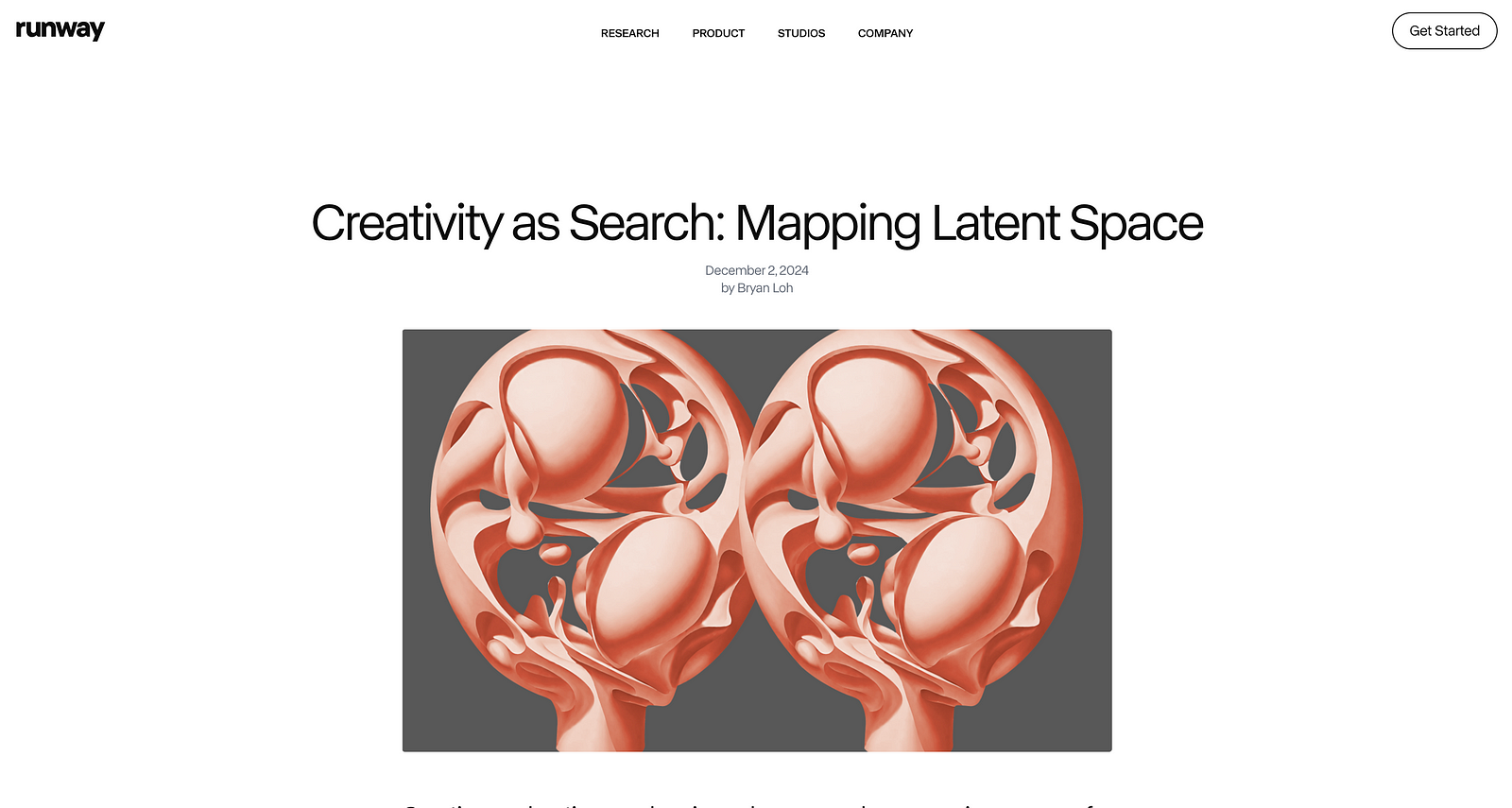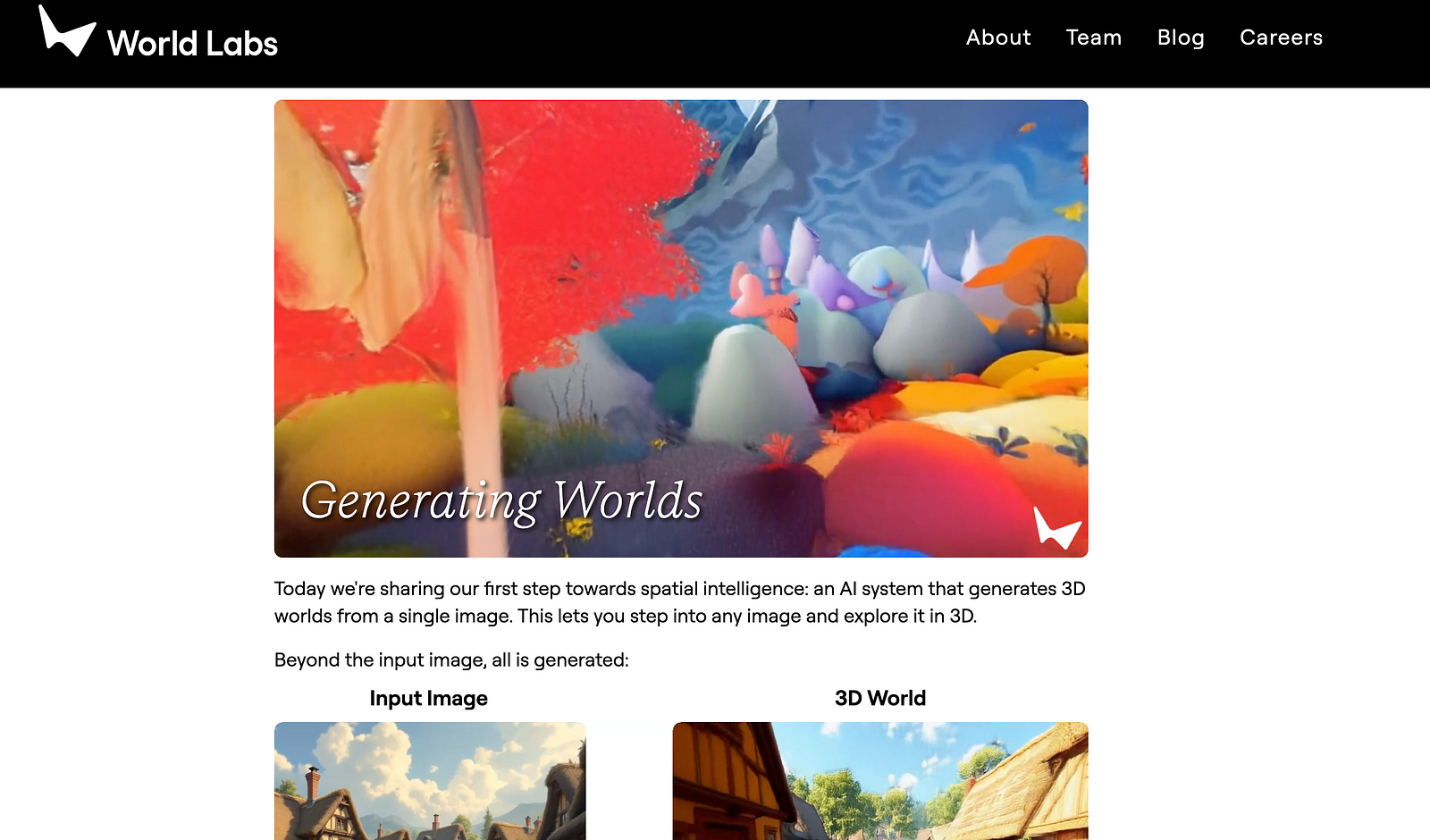- Solan Sync
- Posts
- [Today in AI: AI Video is getting better] Runway's Keyframing Prototype: Revolutionizing Creative AI Workflows
[Today in AI: AI Video is getting better] Runway's Keyframing Prototype: Revolutionizing Creative AI Workflows
Discover Runway's Keyframing prototype - a powerful AI tool blending precision and serendipity to transform creative processes with features like Image-to-Image transformation and non-linear timelines.

Why struggle with file uploads? Pinata’s File API is your fix
Simplify your development workflow with Pinata’s File API. Add file uploads and retrieval to your app in minutes, without the need for complicated configurations. Pinata provides simple file management so you can focus on creating great features.
Runway Announces Keyframing Prototype: A New AI Tool for Creative Exploration
Runway has introduced a Keyframing prototype, an advanced AI feature designed to revolutionize creative workflows by blending precise control with the excitement of unexpected discoveries. This innovative tool is part of Runway’s ongoing commitment to empowering artists and creators through cutting-edge AI capabilities. Let’s explore the unique aspects of this development:
Key Features of the Keyframing Prototype
1. Graph Structure: A Window in Latent Space
Graph Structure: A Window in Latent Space
The Graph structure is the foundation of the prototype. Images are represented as nodes, serving as waypoints in the model's latent space. These nodes can be connected to other nodes to create an edge; a video that transitions from the… x.com/i/web/status/1…
— Runway (@runwayml)
8:23 PM • Dec 2, 2024
Runway’s Keyframing employs a graph-based structure that allows users to visualize and interact with latent space — a conceptual space where AI processes creative data. This structure enables creators to explore and manipulate ideas dynamically, offering a clearer path through the often abstract AI generation process.
Why it matters: It provides intuitive access to complex AI-generated elements, enhancing both usability and control.
2. Balancing Control and Serendipity
Balancing Control and Serendipity
Precise controls help limit the vast space of possibilities, but at the same time, variation and unpredictability can result in "happy accidents"–possibilities that we would not have considered given precise control. To balance this tradeoff, we… x.com/i/web/status/1…
— Runway (@runwayml)
8:24 PM • Dec 2, 2024
A hallmark of the Keyframing prototype is its ability to balance user-directed precision with the serendipitous results that make creative exploration exciting. This interplay between structure and surprise opens up possibilities for non-linear creative thinking.
Example use case: Users can set specific keyframes to guide the creative process while letting the AI fill in transitions, sparking novel ideas.
3. Transform Through “Image to Image”
Users can transform selected images through “Image to Image” - preserving the original composition while altering the style via text prompts - and “Image Variations” - which maintains the original style while varying the composition.
(4/8)
— Runway (@runwayml)
8:27 PM • Dec 2, 2024
Runway extends its creative toolkit with “Image to Image” transformations. This feature allows users to modify existing images, creating new iterations while preserving original elements. It’s a tool for both refinement and experimentation, suitable for fields like animation, design, and concept art.
Impact: Enhances workflows by combining familiarity with the freedom to explore new visual possibilities.
4. Supporting Non-Linear Exploration
Supporting Non-Linear Exploration
Creative exploration rarely follows a straight line. The graph structure naturally affords exploration by allowing users to diverge at various points, creating new forks of possible alternatives. As more exploration occurs, the graph grows… x.com/i/web/status/1…
— Runway (@runwayml)
8:28 PM • Dec 2, 2024
Creativity often thrives in non-linear processes. The Keyframing prototype is designed to support non-linear timelines, enabling creators to jump between moments in their project without being constrained by traditional sequential workflows.
Who benefits: Artists and animators who rely on iterative, non-linear adjustments for their work.
5. Construct Non-Linear Timelines
This allows users to construct non-linear timelines. We provide a sequencer to allow users to export their non-linear timelines into a video with a linear timeline, similar to a “choose your own adventure” experience.
(6/8)
— Runway (@runwayml)
8:29 PM • Dec 2, 2024
Runway enables users to build and manipulate non-linear timelines, providing flexibility for complex projects. Whether you’re fine-tuning animations or exploring alternative narratives, this feature offers unparalleled control over time and structure.
Key takeaway: A game-changer for creators who require adaptability and precision in their projects.
6. An Open Workspace
An Open Workspace
Beyond the Graph structure, we do not impose any organizational constraints on the workspace. Users have complete freedom to organize their nodes and edges - clustering related explorations or separating distinct creative experiments as their process demands.… x.com/i/web/status/1…
— Runway (@runwayml)
8:30 PM • Dec 2, 2024
At its core, the Keyframing prototype is grounded in an open workspace philosophy, offering users a sandbox environment to test, iterate, and perfect their creations without unnecessary constraints.
Why This Matters for Creative Industries
Runway’s new prototype is more than a feature update — it represents a shift toward AI-enhanced creativity as a dynamic process. By making latent space accessible and intuitive, it empowers creators to:
Generate unique and unexpected outputs.
Maintain precision in highly detailed projects.
Optimize workflows through flexibility and experimentation.
Further Reading and Exploration
For an in-depth understanding of the technology and philosophy behind the Keyframing prototype, visit the full research article on Runway’s website:Creativity as Search: Mapping Latent Space
Today in AI: Groundbreaking Developments

1. ChatGPT Turns Two: OpenAI’s Next Big Moves
ChatGPT celebrates its second anniversary with ambitious plans for growth. OpenAI CFO Sarah Friar has revealed that the company is considering running advertisements for the first time to boost revenue. While these plans are still in development, OpenAI remains on track to hit 1 billion users by 2024, a milestone similar to Meta’s Messenger service.
Why it matters: This marks a strategic shift for OpenAI, showcasing its focus on sustainability and user growth as it continues to dominate the conversational AI space.
2. AI Tackling Data Center Energy Efficiency

Startup Orbital Materials is using AI to combat the massive energy demands of data centers. The company has developed a carbon-absorbing material tailored for use inside data centers, effectively reducing emissions. This breakthrough will debut at an Amazon server center in 2025. Future innovations are expected to address water usage and cooling technologies for chips.
Big picture: AI is transitioning from being an energy-intensive technology to a critical enabler of sustainable practices in tech infrastructure.
3. China Challenges OpenAI with Advanced AI Models
Chinese tech giant Alibaba has introduced a new version of its chatbot, Qwen with Questions (QwQ), which outperforms OpenAI’s o1-preview in multiple benchmarks. Like o1, QwQ excels in chain-of-thought reasoning, breaking down problems into smaller components to self-correct errors. This follows similar innovations from DeepSeek and Peking University, solidifying China’s leadership in next-generation AI development.
Why this matters: The rapid evolution of chain-of-thought models reflects the growing competition in AI reasoning capabilities between global leaders.
4. World Labs Turns Screenshots into Interactive Worlds

World Labs, founded by AI pioneer Fei-Fei Li, has unveiled a model that transforms screenshots into 3D interactive worlds. This technology can turn an AI-generated image or a painting into a fully navigable environment, allowing users to explore scenes in real-time. Practical applications include enabling animation studios to stage characters efficiently, reducing production time from hours or days to mere moments.
Use cases: This breakthrough could revolutionize industries like animation, gaming, and virtual reality by drastically cutting production timelines and costs.
Thank you for reading this article so far, you can also access ChatGPT tools and the AI-Powered Business Ideas Guides on my FREE newsletter.
Solan Sync
Get business ideas inspired by the latest academic research, simplified and transformed for practical use, three times…solansync.beehiiv.com
What Will You Get?
Access to AI-Powered Business Ideas.
Access our News Letters to get help along your journey.
Access to our Upcoming Premium Tools for free.
Also, check out trendclutch to find Attention in the AI World: Explore the Best Trends, News, and Newsletters” — All in One Spot Here
🧐 Spending too much time on customer service? Integrate ChatGPT 4o-mini on your website in minutes!
Reply